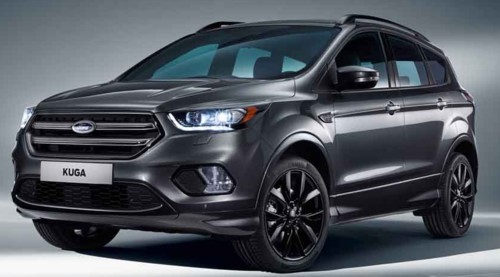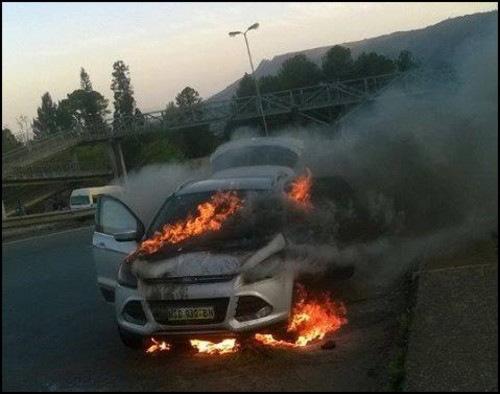VOLVO IS NO LONGER SWEDEN'S BEST SELLING CAR
It was just announced that the Volkswagen Golf won car of the year in Sweden for year 2016. And yes, it's the very Scandinavian country where the iconic Volvo brand topped car sales each and every consecutive year for the past 54 years . However, for the very first time in history or Volvo or rather more exactly the same number of years, the German designed and manufactured VW Golf outsold the Swedish manufactured Volvo in 2016. Volkswagen Golf's accounted for almost 6% of all new cars sold, whereas the combined sales of Volvo’s V70, S90 and V90 only constituted a mere 5.7%. But this event of Volkswagen beating Volvo at sales is not entirely unique because it happened once before. Way back in 1962, the humble Volkswagen Beetle knocked Volvo off the top selling spot by outselling Volvo. Be that as it may, Volvo still retains the largest share of the Swedish Car market, sanding at roughly 22 percent, with Volkswagen in a close second position with approximately 16 percent market share. |
| The smokey Ford Kuga is on fire, literally! |
Despite the fallout from its diesel emissions scandal, with its cheating device, Volkswagen AG as a whole is bouncing back, regaining market confidence after their pledge to focus on electric power in the coming years. VW Golf is Sweden's top seller and currently their most popular car. The VW Golf sales are closely followed by VW Passat as the fifth most popular car, followed by VW Polo as the eight most popular car, followed by the Skoda Octavia as Sweden's tenth most popular car.
Volvo has always been known to be a "very safe car" but the Swedes have lost their national pride when Chinese firm "Zhejiang Geely Holding Group" bought the iconic Swedish brand —Volvo — in 2010. This is probably the real reason why Volkswagen is gaining ground in Sweden?
"Talking about safe cars or rather unsafe cars.
The fiery Ford Kuga and the fiery Ford Everest
are probably the unsafest cars
on the roads today".
Ford motor company has contacted all Kuga owners by post, urging them to book their fiery Kuga's into their workshops for a free maintenance check, but not explaining the urgency of the matter. No sooner have they done this, when four more Ford Kuga's burst into flames during the same amount of days. According to Ford, it appears that the issue is limited to their 1.6-litre EcoBoost engine but according to owners somehow their Everest is also affected. About a year ago a Ford Kuga driver was burnt beyond recognition in Durban, and to-date as many as 40 Kuga fiery incidents have been reported.
1) Ford Kuga owner leaps from burning vehicle in Durban.
2) A PE family is in shock when their Ford Kuga burst into flames.
3) Husband and wife watched their Kuga burnt out.
 |
| A all new Kuga hot-rod in full glory |
 |
| Kuga with frostbite after bursting into flames |
 |
| A fiery Ford Kuga making like a Volcano |
 |
| Peculiarly most of the burnt-out Kugas are white in colour. |
 |
| If it wasn't for the Original Ford Kuga Mag, this burnt out stack could easily have been mistaken for a Volkswagen vehicle. |
 |
| Virtually unrecognizable but is definitely a Kuga |
 |
| From Ford to ashes and from Ford to dust. |
 |
| It looks like a volcanic eruption but it's really a Ford Kuga |
 |
| Ford Kuga front-end totally destroyed |
 |
| Ford Kuga making like a chimney |
 |
| A completely Toasted Ford Kuga |
 |
| A Ford Kuga imitating a cable. |
1) A Volkswagen Polo on fire in Bo-kaap, Cape Town
2) A Volkswagen Polo Vivo caught alight outside the Punjab National Bank in India.
3) A VW Polo hosed down by its owner.
 |
| A VW Polo caught alight on the south bound R102 in KwaZulu Natal |
 |
| A VW Jetta completely engulfed in flames in Verulam-KwaZulu Natal. |
 |
| A VW Polo taking time out. |
In a certain sense every car is a potential / ticking time bomb, considering it is propelled by highly a inflammable liquid like petrol, or diesel, or LP gas in the presence of engine oil, and other combustible materials like cloth, foam, pleather, rubber, PVC and paint. With a battery powered high current electrical system capable of igniting electrical fires, through arcing or an electrical short circuits acting as a trigger. And Fuel spillage from a burst pipe on a hot engine presenting another trigger amongst others. This can be equated to storing a box of matches with the gunpowder in the same keg, whiles we rolling on it.
However, if safety standards are observed to the hilt, accidents will be reduced to an absolute minimum. Case in point, the Samsung S7 with its overheating and self-combusting properties has causes many a house to burn down and likewise many a car has caused its driver severe injuries some of whom burn to death.









